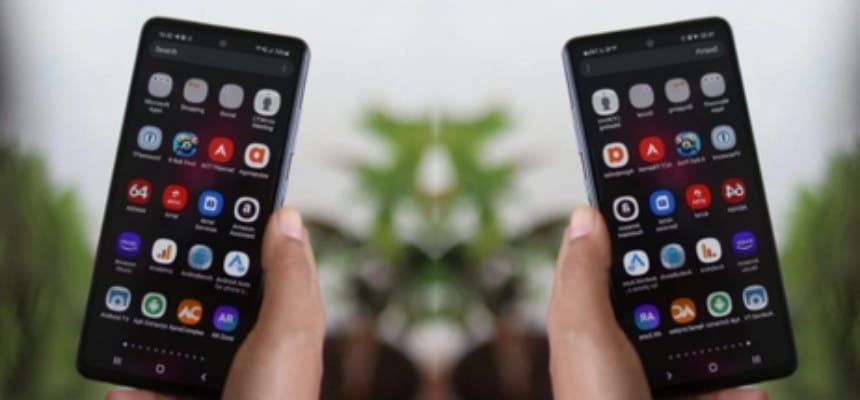In today’s fast-paced world, smartphones have become an integral part of our daily lives. They are no longer just devices for making calls and sending messages; instead, they have evolved into powerful tools that connect us to the digital world in more ways than we could have imagined. With each passing year, smartphone manufacturers push the boundaries of technology, introducing new features, designs, and capabilities that continue to shape the way we live, work, and communicate. In this ever-evolving landscape, staying informed about the latest smartphone trends and innovations is essential for making informed decisions about our tech investments.
The Evolution of Smartphone Displays
One of the most noticeable advancements in smartphones has been the evolution of displays. From the early days of small, low-resolution screens to today’s expansive, high-resolution OLED and AMOLED displays, smartphone screens have come a long way. The introduction of edge-to-edge displays with minimal bezels has not only improved the overall aesthetics of smartphones but has also expanded the screen real estate, providing more room for content and multitasking.
In recent years, we’ve witnessed the rise of high-refresh-rate displays, with some smartphones offering refresh rates of 120Hz, 144Hz, or even 165Hz. These displays deliver smoother animations and scrolling, making the overall user experience more fluid and responsive. Gamers, in particular, appreciate high-refresh-rate displays as they result in reduced input lag and a competitive edge in mobile gaming.
Foldable and rollable displays represent another groundbreaking development in the smartphone industry. Companies like Samsung, Huawei, and Xiaomi have introduced foldable phones that can transform from a traditional smartphone into a tablet-like device. These flexible displays open up new possibilities for multitasking, productivity, and content consumption.
The Power of Smartphone Cameras
The camera capabilities of smartphones have seen dramatic improvements over the years. Today’s smartphones are equipped with sophisticated camera systems that can rival dedicated digital cameras. Multiple lenses, advanced image processing, and AI-driven features have made smartphone photography more accessible and enjoyable than ever before.
One notable trend is the increase in the number of camera lenses on smartphones. Dual-camera setups have become standard, with wide and ultra-wide lenses offering versatile shooting options. Some flagship models feature triple or even quad-camera arrays, incorporating telephoto lenses for optical zoom and dedicated macro lenses for close-up shots.
Night mode and computational photography have become essential features, allowing users to capture stunning low-light and high-dynamic-range (HDR) images. AI-powered enhancements automatically optimize settings and post-processing for the best possible results.
Smartphone manufacturers have also focused on improving video recording capabilities. Many smartphones now offer 4K and even 8K video recording, along with advanced stabilization features for smooth footage. The ability to shoot cinematic-quality videos on a smartphone has democratized content creation and videography.
Processing Power and 5G Connectivity
Under the hood, smartphones have seen significant advancements in processing power and connectivity. The introduction of powerful processors, such as Qualcomm’s Snapdragon series and Apple’s A-series chips, has enabled seamless multitasking, gaming, and app performance. These processors are designed to handle demanding tasks like augmented reality (AR), artificial intelligence (AI), and machine learning (ML).
The rollout of 5G networks has also transformed the way we connect to the internet. 5G offers significantly faster download and upload speeds, reduced latency, and improved network capacity. Smartphones equipped with 5G modems can take full advantage of these capabilities, enabling faster downloads, smoother streaming, and enhanced online gaming experiences.
Battery Life and Charging Innovations
While smartphones have become more powerful, they have also become more energy-efficient. Advances in battery technology have led to longer-lasting batteries that can endure a full day of heavy usage. Additionally, manufacturers have introduced fast-charging technologies that can provide several hours of usage with just a few minutes of charging. Wireless charging and reverse wireless charging have also become common features in many smartphones, adding convenience to the charging process.
Software Updates and Security
The importance of software updates and security cannot be overstated. Regular software updates provide users with access to new features, bug fixes, and performance improvements. More importantly, these updates often include critical security patches that protect smartphones from vulnerabilities and cyber threats. Smartphone manufacturers are increasingly committed to providing extended software support to ensure that devices remain safe and up-to-date for several years.
The Future of Smartphones: What Lies Ahead
As we look to the future, several exciting trends and innovations are on the horizon for smartphones. Here are some key areas to watch:
- Artificial Intelligence: AI will continue to play a significant role in enhancing smartphone features and capabilities. From AI-driven photography enhancements to voice assistants and predictive text, AI will make smartphones more intuitive and user-friendly.
- Augmented Reality (AR) and Virtual Reality (VR): AR and VR experiences will become more immersive on smartphones. These technologies will have applications in gaming, education, healthcare, and more.
- Foldable and Rollable Displays: Foldable and rollable smartphones will become more mainstream, offering unique form factors and multitasking possibilities.
- Environmental Sustainability: Smartphone manufacturers will focus on sustainable materials, energy efficiency, and recycling programs to reduce the environmental impact of smartphone production and disposal.
- Biometric Authentication: Biometric authentication methods like under-display fingerprint sensors and facial recognition will become even more secure and widespread.
- 5G Expansion: 5G networks will continue to expand globally, bringing faster speeds and improved connectivity to more regions.
- Wearable Integration: Smartphones will integrate seamlessly with wearables like smartwatches and augmented reality glasses, creating unified ecosystems for users.
- Health and Wellness: Health monitoring features, such as blood pressure measurement and glucose monitoring, will become standard on smartphones, promoting user well-being.
In conclusion, smartphones have come a long way from their early beginnings as basic communication devices. They have evolved into powerful, multifaceted tools that shape our personal and professional lives. With each passing year, smartphones continue to push the boundaries of technology, offering new possibilities and experiences for users. Staying informed about these trends and innovations is essential for making informed choices in the ever-evolving world of smartphones.


